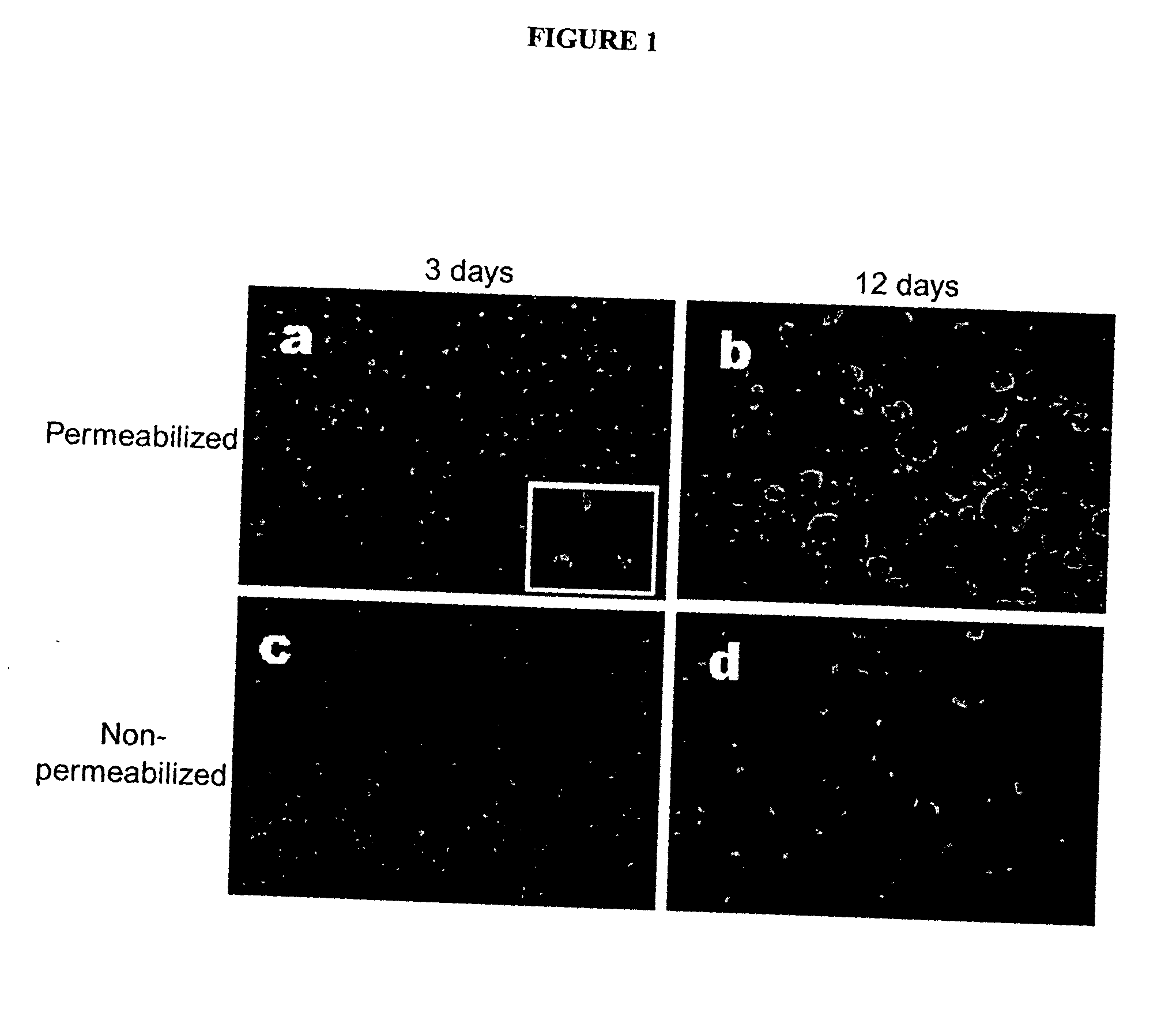Methods of secretory vimentin detection and modulation
a secretory vimentin and detection method technology, applied in the field of secretory vimentin detection and modulation, can solve the problems of significant impairment of bacterial killing of anti-vimentin treated mdm, and achieve the effects of enhancing anti-microbial response, enhancing anti-microbial response, and altering pathophysiologic effects of secretory vimentin
- Summary
- Abstract
- Description
- Claims
- Application Information
AI Technical Summary
Benefits of technology
Problems solved by technology
Method used
Image
Examples
example 2
[0282] Vimentin is Secreted by Mature MDM
[0283] To confirm earlier findings that vimentin can be found in the Golgi and ER.sup.8,14, immunohistochemical analysis was performed using antibodies to vimentin and ER or Golgi markers. These specific markers detected co-localization between vimentin and the ER (FIG. 2a-c), as well as between vimentin and the Golgi (FIG. 2d-f). In order to better address the issue of co-localization, consecutive optical section images were captured along the z-axis of the 12 day MDM preparation (FIG. 2g). As shown in the figure, this method clearly demonstrated the co-localization of vimentin with the Golgi. This confirms that the co-localization does not result from the presence of vimentin above or below the Golgi body, but in it. When proteins fractionated from supernatants of the 12 day MDM were analyzed by microcapillary mass spectrometry (see Table 1) and by Western blot analysis with a specific anti-vimentin monoclonal antibody (FIG. 2h), vimentin w...
example 3
[0289] Vimentin Secretion is Dependent Upon Cellular Activation
[0290] Because phosphorylation of vimentin plays a key role in its dynamic rearrangement, the contribution of kinase pathways to vimentin secretion was investigated. FIG. 4a shows that enhancement of kinase activity by protein phosphatase blockade using okadaic acid (OA) led to an increase in extracellular vimentin levels (compare lanes 1 and 4). Since the secretion of vimentin from cells treated with 40% human serum is already high, the effect of OA on 7 day MDM treated with 10% serum was assessed, and >10 fold increase in vimentin secretion was observed (FIG. 4b, compare lanes 1 and 3). Vimentin is phosphorylated by a number of protein kinases, including PKC.sup.22,23, which has been implicated in the differentiation of promyeloid HL-60 cells. Therefore, mature MDM were treated with the specific PKC inhibitor G6983. Western blotting revealed that vimentin secretion was significantly blocked in cells treated for 2 h wit...
example 4
[0294] Antibodies to Vimentin Decrease Superoxide Production and Bacterial Killing by Mature MDM In Vitro
[0295] Experiments were conducted to address whether vimentin affects the inflammatory response of MDM in vitro. When phagocytic monocytes interact with particulate agents, or are stimulated with PMA, the cells respond by activating oxidative metabolism, with a respiratory burst that generates hydrogen peroxide and superoxide anion. These metabolites constitute part of the host defense system against invading microorganisms 28. Therefore, the role of extracellular vimentin in the inflammatory response was investigated by adding anti-vimentin antibody to mature 12 day MDM and then measuring their ability to generate oxidative metabolites in response to PMA. These experiments showed that anti-vimentin antibodies reduced the oxidative burst of these cells when compared to control antibody-treated cells (FIG. 6a).
[0296] This result indicates that extracellular vimentin is involved in...
PUM
| Property | Measurement | Unit |
|---|---|---|
| concentration | aaaaa | aaaaa |
| pH | aaaaa | aaaaa |
| mechanical stability | aaaaa | aaaaa |
Abstract
Description
Claims
Application Information
 Login to View More
Login to View More - R&D
- Intellectual Property
- Life Sciences
- Materials
- Tech Scout
- Unparalleled Data Quality
- Higher Quality Content
- 60% Fewer Hallucinations
Browse by: Latest US Patents, China's latest patents, Technical Efficacy Thesaurus, Application Domain, Technology Topic, Popular Technical Reports.
© 2025 PatSnap. All rights reserved.Legal|Privacy policy|Modern Slavery Act Transparency Statement|Sitemap|About US| Contact US: help@patsnap.com



